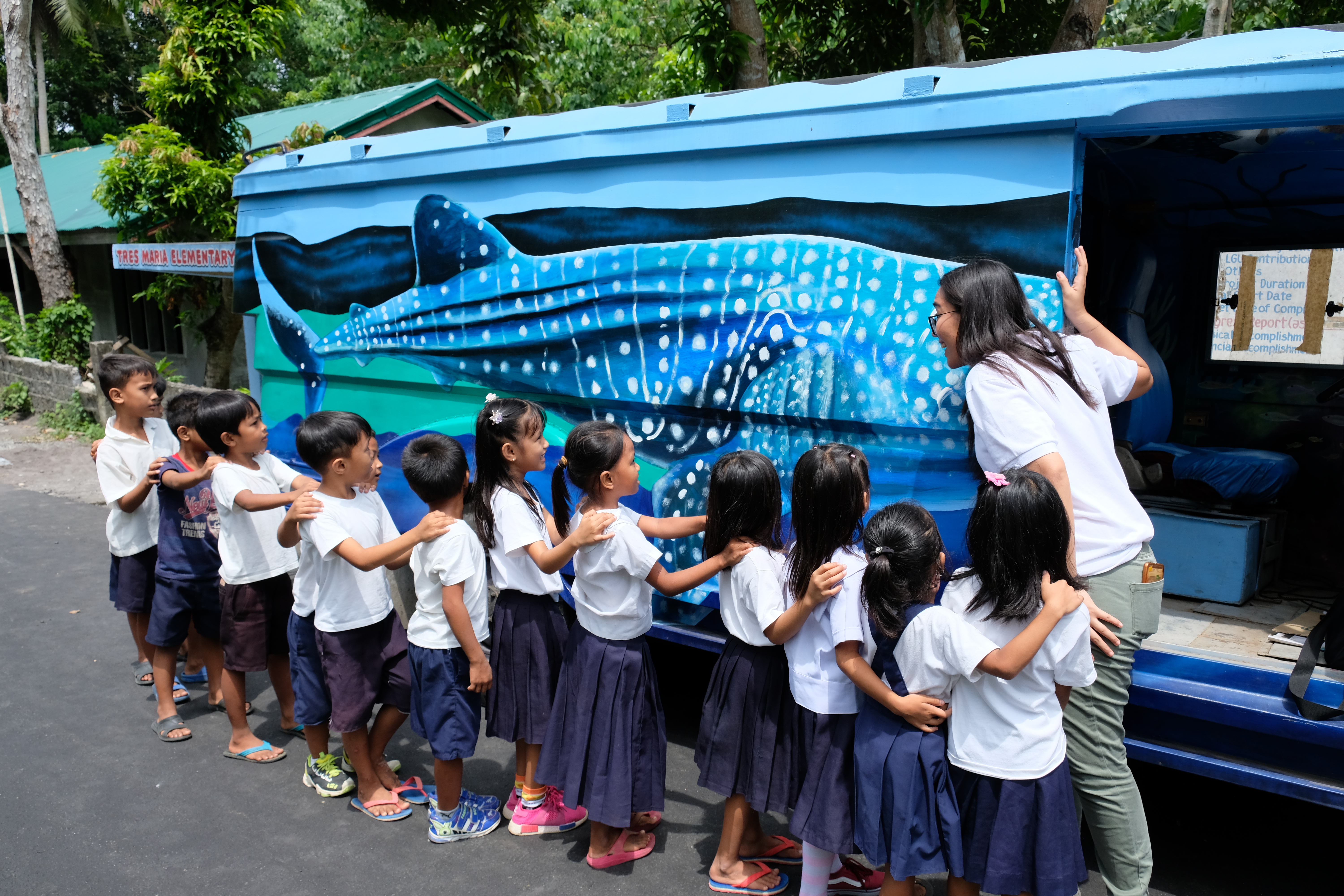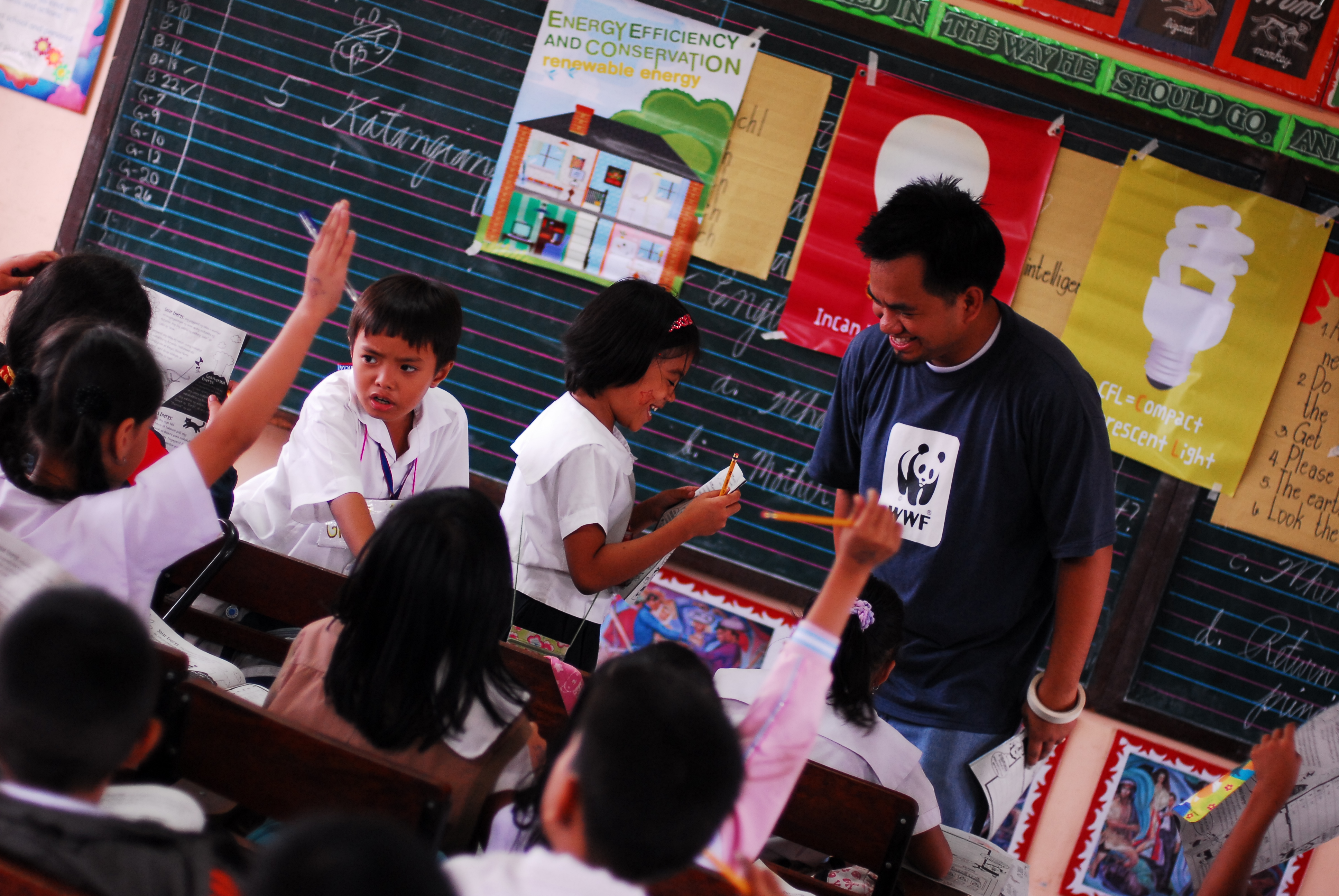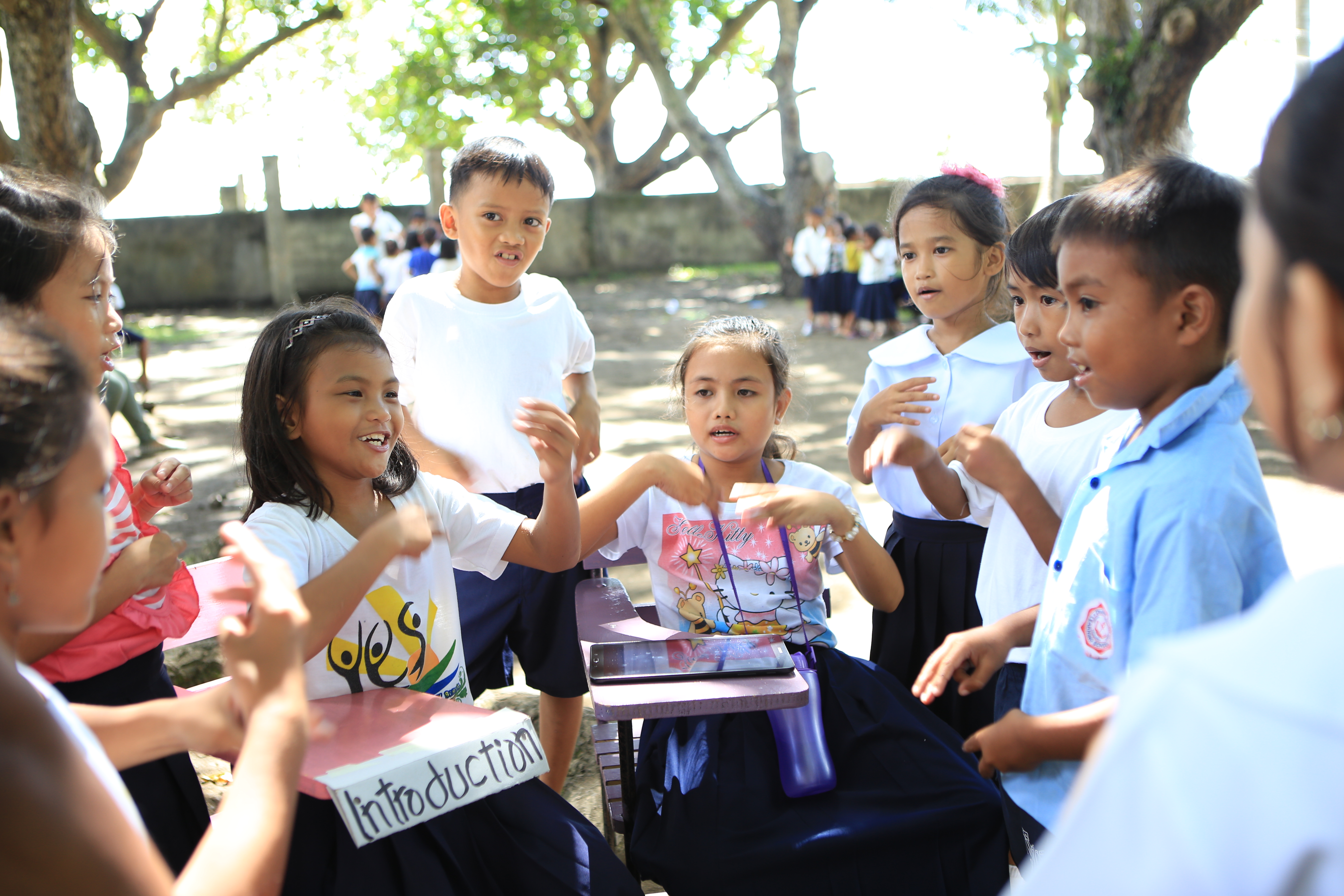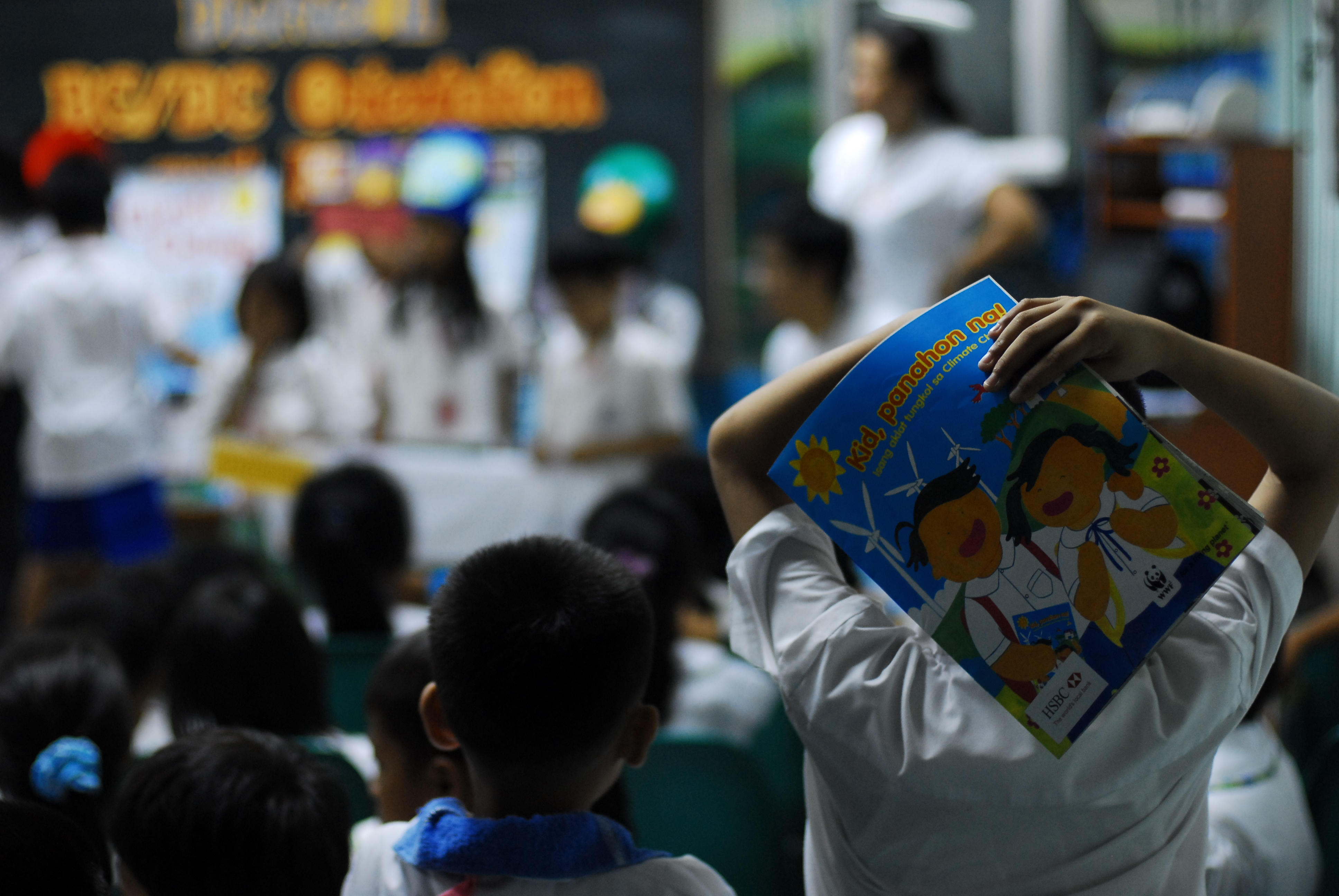Educators, Earth’s Heroes: Touching Minds with the Environmental Education Team
November 2018

Kim Marcelo, Project Officer from the Environmental Education Team, takes students over to their iconic whale shark jeepney. Photograph © Bong Cruz / WWF-Philippines
Rural Bicol. A schoolyard fills with children as they pour out of their classrooms and into the quadrangle. A blue jeepney, spotted like a whale shark, pulls into the driveway. Its occupants, a team of three, file out with arms full of posters and stuffed puppets and flash cards. They have come today with lessons to teach – lessons for the environment.
In commemoration of the passing of Republic Act No. 9512 in 2008, the Department of Environment and Natural Resources declared every November as Environmental Education month. Now on its 10th year, environmental education efforts have been picking up steam since the passing of the act – but WWF-Philippines has been spreading the word for much longer.

Dino Calderon, Project Manager of the Environmental Education Team, handles a classroom of excited students during one of the team’s school visits. Photograph © AG Sano / WWF-Philippines
In the year 1999, the Environmental Education Team was established. Known as the EE Team, they started with the LIFE program, or Learning Interdependently for the Environment, touring coastal communities across Southern Batangas in a blue van adorned with paintings of different species found in the Philippines. The team first focused on students, but as they progressed further into their work they began reaching out to educators through the WWF EE Teacher’s Training, with modules such as Wildlife Conservation, Waste Management and Climate Change, among others. “You’ll see… [participants] can already teach [environmental education] on their own. [We’re teaching others] to be teachers,” says Dino Calderon, Project Manager of the EE team. Part of the EE team’s work, says Dino, is to train others to become future environmental educators themselves.
“It’s not that people don’t care. It’s that people don’t know the consequences,” says Kim Marcelo, partner and project officer on the EE team. With long-standing issues such as the loss of biodiversity and climate change now coupled with emergent problems such as plastic pollution, the team recognizes that action must also come from the public. “Like now,” adds Calderon, “Even teachers, they know [these issues] are bad, but they don’t think about everyday things they can do.”

Students play games in the schoolyard as part of one of the Environmental Education Team’s modules. Aside from educating the youth, the team works to train and inspire future teachers to spread the message of environmentalism. Photograph © WWF-Philippines
“I’m a big fan of the environment and a big fan of education. Being on the Environmental Education team is the perfect marriage of two things I want to advocate for,” says Maye Padilla, project officer of the EE team. The current team is small, at only three large, and is comprised of individuals who love the environment and who have talent and passion for education, capable of captivating a hall full of excitable children with their energy. “It’s fun being with kids,” continues Maye. “Since I’m a fan of nature, I want them to become fans of nature too.”
As of this year the EE team has spoken before 800,000 individuals, and are working towards one million reached by the year 2020. They don’t want to stop there, though. The team hopes to carry their work beyond themselves, and are working towards having environmental education streamlined and institutionalized into the school system, lobbying with public institutions while reaching out to as many teachers as possible in a grassroots movement to get the country to care.

A room full of children listen attentively during one of the Environmental Education team’s school visits. With over 800,000 individuals reached, the team continues to work with schools and communities as they spread their message of environmentalism. Photograph © AG Sano / WWF-Philippines
“It’s about changing perspectives… We want people to see how beautiful the Philippines is,” says Padilla, her eyes bright. With RA 9512 written into law, the gears have been set for the institutionalization of environmental education. Before there was any Republic Act, however, the EE team took to schoolyards in their painted van, influencing young minds and building a network of educators to further the cause of environmentalism against increasingly dire issues. For now, and into the future, the team continues with their mission – of reaching young minds and teaching teachers for the environment.
For more information, please contact:
Communications & Media Manager Mr. Dan Ramirez (dramirez@wwf.org.ph)
